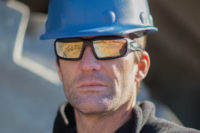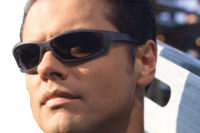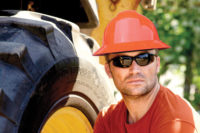
Standardization, by definition, is the process by which a standard has been successfully established. According to a recent study, it is also a trend seen in more and more companies that are making efforts to streamline their safety eyewear program.
According to Prevent Blindness America®, thousands of eye injuries occur each day and 90 percent of those injuries are preventable with the use of appropriate eye protection. The importance of having an effective safety eyewear program is made clearer when one considers that the U.S. Bureau of Labor Statistics estimates the cumulative annual cost of all reported eye injuries at nearly $355 million.
Standardizing your safety eyewear program can be an effective way not only to protect workers from eye injuries, but also to simplify managing your safety team. You will also ensure that your workers are wearing the right product for their job, improve compliance and reduce unused inventory of safety glasses, thus saving time, lowering costs and improving profitability.
Survey says…
The results from the survey are indicative of a growing interest in the idea of standardization. An overwhelming 85 percent of participants in the survey either agree or strongly agree that standardizing safety equipment at their organization can help them better manage their safety program for a variety of reasons. Nearly 70 percent offer employees up to four eyewear models, 23 percent offer five to nine models, and 5.5 percent offer more than 15 models.
Plus, 23 percent of the survey respondents believe it is more economical to have a smaller number of eyewear models and inventory; 18 percent believe standardization would make it easier to manage the number of eyewear models; 13 percent reason that a standardized program would aid in the identification of compliant workers; and nearly 12 percent think it would save time in managing the number of eyewear models.
Inventory woes
Dan Schneider, vice president of operations for Wisconsin-based Janard, Inc., which provides sitespecific environmental compliance and OSHArequired programs and employee training for its clients, sees the need for standardization and reducing the number of safety eyewear models. “As a safety consultant working with company representatives, we see many people in a variety of industries who have a hard time maintaining an inventory of personal protective equipment in general, due to the overwhelming number of types and requirements,” commented Schneider.
Even with the potential benefits, some safety managers indicated that they might be unwilling to take steps to standardize because past experiences with streamlining their eyewear have led to complaints. According to the survey results, the most important areas to safety professionals in helping to develop/maintain a successful eyewear program are how to choose the correct safety eyewear for workers (19 percent), how users can properly fit and wear their safety eyewear (18 percent), followed by how standardizing safety eyewear can improve your safety program (14 percent). Standardization does not mean eliminating options. Instead, standardization is more about offering the right options.
Exceptions to the rule
For many workers, improper fit, fogging, or scratching may be the leading concerns, and there are products in the marketplace specifically designed to address these concerns. Safety managers should recognize that it may not be possible to standardize 100 percent, and your supplier will be able to suggest the appropriate product or product line; for example, he or she may suggest slim-fit eyewear made for slimmer facial profiles or lenses treated with a special anti-fog or anti-scratch coating; or work with you to develop a prescription eyewear program.
Clearly many companies are beginning to take steps to take advantage of standardization’s benefits. Recently, workers at a national auto parts company with seven distribution centers around the country were using a variety of different safety glasses in each of their locations. The safety director made the decision to move to a standardized program to reduce SKU levels, and to institute a new line of safety eyewear that would meet all safety standards and would provide a comfortable fit for the majority of his workers. His chosen supplier reviewed the choices and determined the best option based on its flexibility, comfort, and replacement lenses. The safety director and his workers have been happy with the change, and are now looking to institute the same program for personnel at the company’s other retail locations.
Where to start
To begin the standardization process, consider the following tips:
- Hazard assessment: Thoroughly investigate and document the hazards for each type of job, and provide a safety eyewear solution that meets the needs of each hazard as well as the needs of the worker.
- Approved eyewear: Establish an approved eyewear list for plant and job and offer just enough product options to meet the hazard needs in your workplace. Strictly adhere to this policy.
- Special issues: Be sure to have product offerings that provide a proper fit for each worker as well as the correct lens tint for each application, i.e. green for IR, amber for low light, and tinted for glare.
- Team effort: Include your workers in the evaluation process for choosing eyewear and regularly engage them about the performance of the products they are using. Establish an incentive program for injury-free performance and safety leadership within your plant.
- Outside resources: Develop and maintain a relationship with a representative from an eyewear manufacturing company, who will look out for your changing needs and evaluate new products and technology.
- Cost considerations: Look at total cost of ownership in choosing safety eyewear. It may be tempting to go with lower priced eyewear, however, in the long run, the lower priced eyewear may require more regular replacements and therefore, additional costs.
“Standardizing on a ‘shortlist’ of compliant types of PPE has the potential to greatly reduce confusion, minimize ordering, and ease the task of identifying compliant equipment. Of course, price is also a considerable factor with today’s fragile economy and standardizing equipment purchases could alleviate the costs associated with multiple vendors.”


